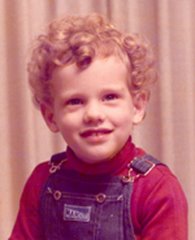by Mary Shelley
Recommended Age: 14+
 The wife of the famous writer Percy Bysshe Shelley dashed off this classic of Gothic horror after having a dreadful nightmare. Ever since then, generations of readers and film-viewers have shared in her nightmare.
The wife of the famous writer Percy Bysshe Shelley dashed off this classic of Gothic horror after having a dreadful nightmare. Ever since then, generations of readers and film-viewers have shared in her nightmare.Dr. Victor Frankenstein is the father of all mad scientists. Driven by a diseased ambition to prove mankind equal to God, Frankenstein robs graves, harnesses vast powers of nature, and learns how to put life into dead flesh. By the time he succeeds in making his Monster alive, the poor doctor is half-dead with fever and half-mad with the realization of what he has unleashed on the world. By the time he recovers, Frankenstein is stricken with remorse and wants to undo the awful thing he has done. But that means destroying the enormous, disfigured creature he brought to life. And in the meantime, that creature has gone out into the world to make its own fortune, its own mistakes, and its own discoveries about love, hate, life, and death.
 The remainder of the book is a combination of gripping suspense and inexorable tragedy, as the monster seeks revenge on the man who made him – who made him so badly that the whole world fears him. The book’s point of view allows you to share both Frankenstein’s feelings of dread, guilt, and despair, and the Monster’s feelings of loneliness, self-hate, and revenge.
The remainder of the book is a combination of gripping suspense and inexorable tragedy, as the monster seeks revenge on the man who made him – who made him so badly that the whole world fears him. The book’s point of view allows you to share both Frankenstein’s feelings of dread, guilt, and despair, and the Monster’s feelings of loneliness, self-hate, and revenge.And no, we’re not talking about a flat-headed, green-skinned giant who waddles around, grunting incoherently, with bolts sticking out of his neck. Imagine a person put together out of spare parts from other people, parts that don’t match, held together by gruesome scar tissue – but with an intelligent, inquisitive mind inside that
 is agonized by the way other people shrink away from him, the way they pre-judge him because of his ugliness.
is agonized by the way other people shrink away from him, the way they pre-judge him because of his ugliness.I’m sure there’s a moral in there somewhere. But in the frozen wilderness of the novel’s ending, you may forget all about the improving moral of the story, and be stunned by the grief and emptiness that remains an object of horror, even after the Monster has ceased to horrify.







No comments:
Post a Comment